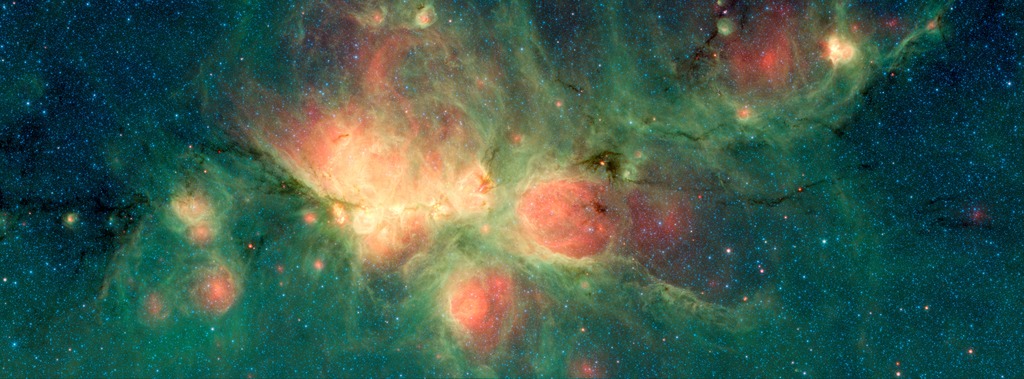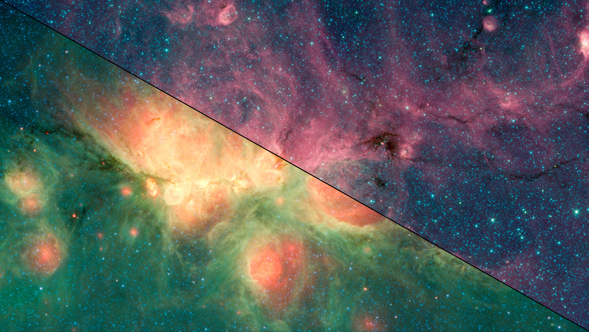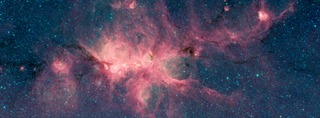
Credit: NASA/JPL-Caltech
Observation • October 23rd, 2018 • ssc2018-14a
ssc2018-14a
The Cat's Paw Nebula, imaged here by NASA's Spitzer Space Telescope, lies inside the Milky Way Galaxy and is located in the constellation Scorpius. Its distance from Earth is estimated to be between 1.3 kiloparsecs (about 4,200 light years) to 1.7 kiloparsecs (about 5,500 light years).
The bright, cloudlike band running left to right across the image shows the presence of gas and dust that can collapse to form new stars. The black filaments running through the nebula are particularly dense regions of gas and dust. The entire star-forming region is thought to be between 24 and 27 parsecs (80-90 light years) across.The stars that form inside the nebula heat up the pressurized gas surrounding them, such that the gas may expand and form "bubbles," which appear red in this image. Asymmetric bubbles may "burst," creating U-shaped features.
The green areas show regions where radiation from hot stars collided with large molecules and small dust grains called polycyclic aromatic hydocarbons (PAHs), causing them to fluoresce.
This image was compiled using data from two Spitzer instruments, the Infrared Array Camera (IRAC) and the Multiband Imaging Photometer (MIPS). The colors correspond with wavelengths of 3.6 microns (blue), 4.5 microns (cyan), 8 microns (green) and 24 microns (red).
About the Object
- Name
- Cat's Paw Nebula • Bear Claw Nebula • NGC 6334 • Gum 64
- Type
- Nebula > Type > Star Formation
- Nebula > Type > Interstellar Medium
- Nebula > Appearance > Emission
- Nebula > Appearance > Dark
- Distance
- 5,500 Light Years
Color Mapping
| Band | Wavelength | Telescope |
| Infrared | 3.6 µm | Spitzer IRAC |
| Infrared | 8.0 µm | Spitzer IRAC |
| Infrared | 24.0 µm | Spitzer MIPS |
Astrometrics
- Position ()
- RA =17h 19m 17.3s
- Dec = -36° 3' 56.4"
- Field of View
- 1.9 x 0.7 degrees
- Orientation
- North is 55.0° left of vertical






